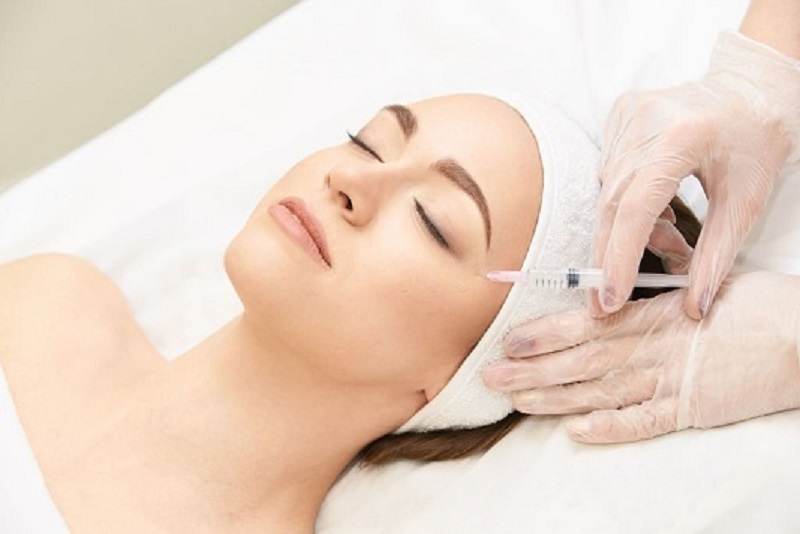
Have you ever wondered how surgeons could transform a person’s appearance and restore their confidence and self-esteem through reconstructive surgery? Reconstructive surgery is an incredible field of medicine that has helped countless individuals overcome birth defects, traumatic injuries, and other physical challenges. It’s truly an art form requiring technical expertise, creativity, and a keen aesthetic sense.
In this blog, we’re going to explore the world of reconstructive surgery and dive into the ways in which skilled surgeons create beauty through their craft. We’ll discuss the surgeons’ techniques, the challenges they face, and the impact this field has on patients’ lives.
Join us as we discover the fascinating world of reconstructive surgery and celebrate the incredible beauty that a skilled surgeon can create.
The Science Behind a Beautiful Face
Beauty is often said to be in the eye of the beholder, but there is actually a science behind what we find beautiful. This is particularly true when it comes to facial features. The symmetry, proportions, and contours of the face all play a role in our perception of beauty. In recent years, research has begun to shed light on the science behind a beautiful face.
The face is the primary means by which we communicate with each other, and it’s often the first thing we notice about a person. Researchers have traced the factors that help in determining facial beauty. These factors, like symmetry, golden ratio, proportions, and contours, are used by surgeons for reconstructing surgeries. People should choose an experienced center for plastic and reconstructive surgery to carry on such procedures for beauty enhancement. Below are the major two factors used for reconstructive surgery.
Symmetry
Facial symmetry refers to how similar the two halves of the face are. Our brains are naturally wired to prefer symmetry, and studies have shown that individuals with more symmetrical faces are generally perceived as more attractive than those with less symmetry. Facial symmetry is also associated with good genetic health, as it indicates that an individual has developed properly and has fewer genetic mutations. Conversely, asymmetry in the face can be an indicator of underlying health issues or medical conditions. Overall, striving for balance and harmony in facial features can contribute to a more attractive appearance.
The Golden Ratio
The golden ratio is a mathematical formula that has been used for centuries in art and architecture to create aesthetically pleasing designs. It is based on the proportion of 1:1.618 and is often referred to as the “divine proportion” or the “golden mean.” In facial beauty, the golden ratio can be used to determine the ideal proportions of various facial features. For example, the distance between the eyes should be approximately 1.618 times the width of the nose, and the distance between the pupils should be about 1.618 times the distance between the eyes and the mouth. Using the golden ratio to analyze facial features, cosmetic surgeons and other medical professionals can achieve a more balanced and harmonious appearance in their patients. However, it’s important to note that not every face can conform to the exact golden ratio. A skilled practitioner will always consider each individual’s face’s unique features and proportions to make it look more attractive and pleasing.
Is Reconstructive Surgery Science or Art?
The field of reconstructive surgery involves restoring form and function to the body after injury, disease, or congenital abnormalities. This often involves complex procedures that require both technical skill and artistic expertise. As such, there has been a long-standing debate in the medical community about whether reconstructive surgery should be considered a science or an art.
On the one hand, reconstructive surgery is undoubtedly a science. It involves a deep understanding of anatomy, physiology, and medical techniques, and surgeons must rely on evidence-based approaches to achieve successful outcomes. They must have a thorough knowledge of the latest surgical procedures, technologies, and medications to provide the best possible care for their patients. In addition, the use of advanced imaging technologies and computer-assisted design software has greatly enhanced the precision and accuracy of reconstructive surgery, making it more of a scientific endeavor than ever before.
However, many reconstructive surgeons argue that the artistry of the field cannot be ignored. Because reconstructive surgery often involves restoring both form and function to the body, surgeons must be able to consider a variety of aesthetic considerations, including the patient’s individual facial or bodily features, skin tone, and overall appearance. They must use their artistic eye and intuition to create a functional and aesthetically pleasing result. In many cases, this requires a great deal of creativity and ingenuity, and surgeons must be able to think outside the box to achieve the best possible outcome.
5 Surgical Procedures To Increase Beauty
While beauty is subjective and comes in all shapes and sizes, many people undergo surgical procedures to enhance their appearance. Here are five surgical procedures commonly performed to increase beauty:
⦁ Rhinoplasty: This procedure is commonly performed to correct different nasal issues, such as a crooked or misshapen nose, a prominent hump on the bridge of the nose, or a bulbous or drooping nasal tip. The surgery involves making incisions inside the nostrils or outside the nose and then reshaping the underlying bone and cartilage to achieve the desired results.
⦁ Blepharoplasty: This procedure is commonly performed to address drooping or sagging eyelids, making the eyes appear tired or aged. The surgery involves making small incisions in the eyelids’ natural creases and removing excess skin and fat to create a more youthful and refreshed look.
⦁ Facelift: This procedure is commonly performed to address the signs of aging on the face and neck, such as sagging skin, wrinkles, and jowls. The surgery involves making incisions along the hairline and around the ears and then lifting and tightening the underlying muscles and tissues to create a smoother and more youthful appearance.
⦁ Brow lift: This procedure is commonly performed to address sagging or drooping eyebrows, which can create a tired or angry appearance. The surgery involves making small incisions either along the hairline or above the eyebrows and then lifting and smoothing the forehead muscles and tissues to create a more youthful and refreshed look.
⦁ Chin augmentation: This procedure is commonly performed to enhance the shape and size of the chin, creating a more balanced and attractive facial profile. The surgery involves making a small incision either under the chin or inside the mouth and then inserting a chin implant to achieve the desired results.
To Conclude
The field of reconstructive surgery is both an art and a science. Advances in technology and techniques have made it possible to enhance our appearance and quality of life through procedures such as rhinoplasty, blepharoplasty, facelifts, brow lifts, and chin augmentation. If you are considering any of these procedures, consulting with a qualified and experienced surgeon is essential. At Cilento Facial Plastics, we offer a range of cosmetic procedures to help you look and feel your best. If you are searching for the best center for plastic and reconstructive surgery, we are here for you. Contact us today to schedule a consultation and learn more.








